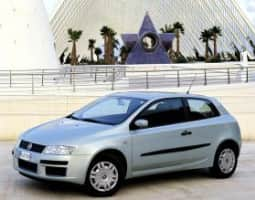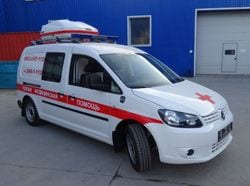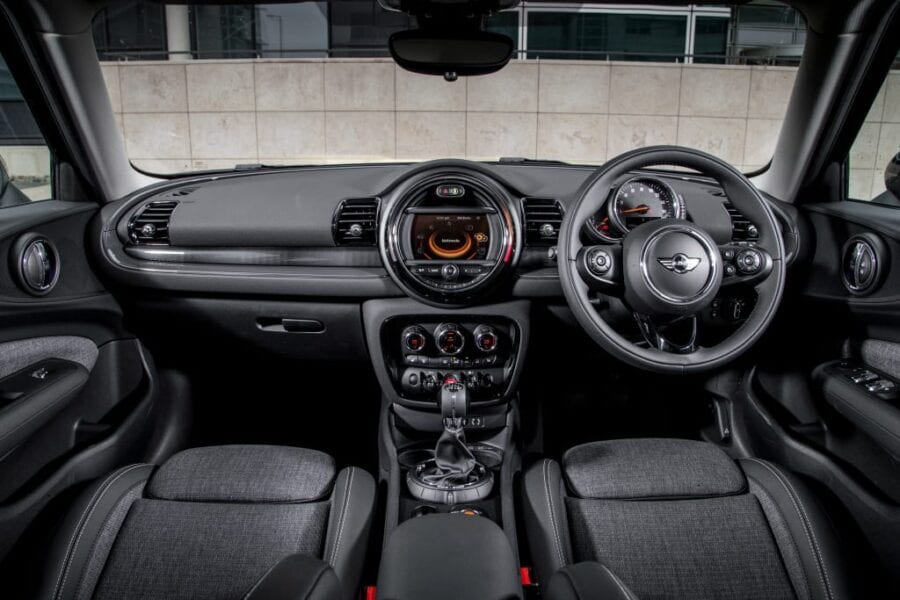
Fiat Stilo 1.6 16V dynamic
The fact is that a man must get used to every new thing and somehow allow it to penetrate his skin. Only then are all his remarks, remarks or criticisms in any form of value. The time it takes to get new things under your skin of course varies from person to person. The same goes for items and things that should become a habit for the user or critic. And since we are a road transport broker, we will of course focus on cars.
The period of getting used to a new car is calculated by the number of kilometers traveled. There are cars that only need a few hundred meters to make you feel at home in your favorite chair, but there are cars where this period is much longer. These include the new Fiat Stilo.
It took Steele quite a few miles for it to take hold deep enough under the skin. After the first disappointments, it was time for him to start showing himself in the best possible light.
And what worried you most during this period? On the first place on the scale are the front seats. In them, Italian engineers discovered new laws of ergonomics. The front seats are as high as in limousine minibuses, and that's not a problem. It is known that we usually complain about an insufficiently convex back, which, as a result, does not support the spine enough.
In Style, the story is turned upside down. It is already true that the correct posture of the human body or, more precisely, the spine is in the form of a double ace, but the Italians nevertheless exaggerated a little. The back is strongly emphasized in the lumbar region. As a result, the spine of the seat with adjustable lumbar support is (probably) completely relaxed due to the described problem.
The second place was taken by a hard and uncomfortable steering wheel. The resistance of the spring holding the lever in the on position (for example, direction indicators) is too high, so the driver initially has the feeling that he is about to break them.
Likewise, the gear lever gives the driver a unique feel. The movements are short and precise enough, but the handle feels empty. The free part of the lever movement is not accompanied by “narrative” resistance, further pressing of the lever on the gear is initially restrained by the rigid spring of the synchronous ring, followed by the “empty” engagement of the gear. Feelings that probably won't make the driver particularly want to take a more extensive walk through the gears. It is very likely that there are people who love Fiat gearboxes (the story of the power of habit), but it is also true that the number of people who will have to get used to the gearbox is definitely greater.
But let's move from the area of the car that takes a little getting used to, to the areas where it isn't necessary.
The first is the engine, the design of which has undergone a bold update. It offers 76 kilowatts (103 horsepower) of maximum power at 5750 rpm. Even 145 Newton meters of maximum torque and a slightly “hilly” torque curve in the automotive industry does not set the standard, which again shows up on the road.
Flexibility is only average, but enough to accelerate (from 0 to 100 km / h in 12 seconds, which is 4 seconds worse than the factory data) 1250 kilograms of heavy Style ends at an acceptably high speed of 182 kilometers per hour / hour less than promised at the factory ). Due to the average flexibility, the driver presses the accelerator pedal a little harder, which is also reflected in a slightly higher fuel consumption. In the test, it was not quite the most favorable 1 l / 11 km, and fell below the limit of 2 l / XNUMX km only when driving mostly out of town.
The ASR system will take care of taming the “extra” motor horses. His work is efficient and more than meets expectations. However, so that the driver does not use the button too often to turn off the slip control of the drive wheels, they took care of a bright luminous control lamp in the switch. Its lighting is so strong at night that, despite its low mounting on the center console next to the gear lever, it literally catches the eye and makes it difficult to drive the car.
The chassis is also commendable. Swallowing long and short waves and shocks is effective and extremely convenient. The five-door Stilo is certainly more family-oriented than its three-door sibling, and if you take into account the fact that the five-door body is even taller than the three-door version, the slope is slightly higher than the five-door. -door Stylo is quite acceptable.
Thus, Fiat Stilo is another product of the automotive industry that needs more thorough refinement. The time required for this is also partly up to you, since it doesn't matter what car you drive. So when you go to a Fiat dealership and decide to take a test drive, ask the dealer for a slightly larger lap and don't make a decision based on the first five kilometers alone. Such a short test can be misleading. Consider the human flaw called force of habit and don't judge new things (cars) solely on the basis of currently known data. Give him a chance to show himself in the best light, and then evaluate him. Remember: a person's perception of the environment usually changes after he has become accustomed to it.
Give him a chance. We gave it to him and he did not disappoint us.
Peter Humar
Photo: Aleš Pavletič.
Fiat Stilo 1.6 16V dynamic
Basic data
| Sales: | Avto Triglav doo |
|---|---|
| Base model price: | 13.340,84 € |
| Test model cost: | 14.719,82 € |
| Calculate the cost of auto insurance | |
| Power: | 76kW (103 KM) |
| Acceleration (0-100 km / h): | 10,9 with |
| Maximum speed: | 183 km / h |
| Mixed flow ECE: | 7,4l / 100km |
Technical information
| engine: | 4-cylinder - 4-stroke - in-line - petrol - transverse front mounted - bore and stroke 80,5 × 78,4 mm - displacement 1596 cm3 - compression ratio 10,5:1 - maximum power 76 kW (103 hp) c.) at 5750 rpm - maximum torque 145 Nm at 4000 rpm - crankshaft in 5 bearings - 2 camshafts in the head (timing belt) - 4 valves per cylinder - electronic multipoint injection and electronic ignition - liquid cooling 6,5 .3,9 l - engine oil XNUMX l - variable catalyst |
|---|---|
| Energy transfer: | the engine drives the front wheels - 5-speed manual transmission - gear ratio I. 3,909; II. 2,158 hours; III. 1,480 hours; IV. 1,121 hours; V. 0,897; reverse 3,818 - differential 3,733 - tires 205/55 R 16 H |
| Capacity: | top speed 183 km / h - acceleration 0-100 km / h 10,9 s - fuel consumption (ECE) 10,3 / 5,8 / 7,4 l / 100 km (unleaded gasoline, elementary school 95) |
| Transportation and suspension: | 5 doors, 5 seats - self-supporting body - front single suspension, spring legs, triangular cross rails, stabilizer - rear axle shaft, screw springs, telescopic shock absorbers, stabilizer - two-wheel brakes, front disc (forced cooling), rear disc, power steering, ABS , EBD - rack and pinion steering, power steering |
| Mass: | empty vehicle 1250 kg - permissible total weight 1760 kg - permissible trailer weight with brake 1100 kg, without brake 500 kg - permissible roof load 80 kg |
| External dimensions: | length 4253 mm - width 1756 mm - height 1525 mm - wheelbase 2600 mm - track front 1514 mm - rear 1508 mm - driving radius 11,1 m |
| Inner dimensions: | length 1410-1650 mm - front width 1450/1470 mm - height 940-1000 / 920 mm - longitudinal 930-1100 / 920-570 mm - fuel tank 58 l |
| Box: | (normal) 355-1120 l |
Our measurements
| T = 2 ° C, p = 1011 mbar, rel. vl. = 66%, Meter reading: 1002 km, Tires: Dunlop SP Winter Sport M3 M + S | |
| Acceleration 0-100km: | 12,4s |
|---|---|
| 1000m from the city: | 33,9 years ( 151 km / h) |
| Flexibility 50-90km / h: | 15,7 (IV.) S |
| Flexibility 80-120km / h: | 25,0 (W) p |
| Maximum speed: | 182km / h (V.) |
| Minimum consumption: | 9,9l / 100km |
| Maximum consumption: | 13,4l / 100km |
| test consumption: | 11,2 l / 100km |
| Braking distance at 130 km / h: | 88,9m |
| Braking distance at 100 km / h: | 53,8m |
| Noise at 50 km / h in 3rd gear | 58dB |
| Noise at 50 km / h in 4rd gear | 57dB |
| Noise at 50 km / h in 5rd gear | 56dB |
| Noise at 90 km / h in 3rd gear | 66dB |
| Noise at 90 km / h in 4rd gear | 63dB |
| Noise at 90 km / h in 5rd gear | 62dB |
| Noise at 130 km / h in 4rd gear | 68dB |
| Noise at 130 km / h in 5rd gear | 67dB |
| Test errors: | unmistakable |
evaluation
Perhaps a slightly longer period of getting used to it is likely to pay off later with each additional kilometer. This will be facilitated by a comfortable chassis, good flexibility in the interior, a fairly rich safety package and a favorable price for the base model.
We praise and reproach
rear bench seat flexibility
chassis
driving comfort
high waist
price
non-removable back bench
front seats
consumption
Feeling of "emptiness" on the gear lever

